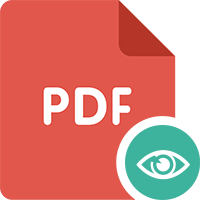Corporate Climate Commitments and the Net Zero Transformation: Strategic Implications and Organizational Dynamics
Published Online: October 09, 2025
Author Details
( * ) denotes Corresponding author
This paper explores the evolving landscape of corporate climate commitments with a focus on the Net Zero transition, as demonstrated through the strategic initiatives of General Motors and the investment philosophy of Generation Investment Management. Drawing on insights from both organizations, the paper examines how corporations are responding to the climate crisis by integrating sustainability into core business strategies. The paper highlights the complexity of Scope 1, 2, and 3 emissions, the systemic challenges of supply chain decarbonization, and the role of investors in shaping climate accountability. Through a theoretical lens, the paper synthesizes themes of strategic adaptation, stakeholder engagement, innovation-driven growth, and fiduciary duty. It further discusses the cultural and operational transformation required within legacy organizations to realize climate goals. This analysis underscores the need for a holistic, systems-level approach to sustainability, where ambition, agility, and collaborative governance drive meaningful change in pursuit of a 1.5°C-aligned future.
Keywords
Net Zero; Corporate climate commitments; Sustainability strategy; Generation investment management; Scope 1-2-3 emissions; ESG investing; Supply chain decarbonization; Fiduciary duty; Organizational transformation; Climate-led investing
- Albort-Morant, G., Leal-Rodríguez, A. L., & Fernández-Robles, C. (2022). Assessing green product innovation effects on firm performance: A dynamic capabilities perspective. Business Strategy and the Environment, 31(2), 859–873. Retrieved from https://doi.org/10.1002/bse.2912
- Argyris, C., & Schön, D. A. (1996). Organizational learning II: Theory, method and practice. Addison-Wesley.
- Bapuji, H., de Bakker, F. G., Brown, J. A., Higgins, C., Rehbein, K. A., & Spicer, A. (2020). Business and society research in times of the corona crisis. Business & Society, 59(6), 1067–1078. Retrieved from https://doi.org/10.1177/0007650320921172
- Barney, J. (1991). Firm resources and sustained competitive advantage. Journal of Management, 17(1), 99–120. Retrieved from https://doi.org/10.1177/014920639101700108
- Bechtsis, D., Tsolakis, N., & Vlachos, D. (2021). Digital transformation for a sustainable supply chain: Challenges and opportunities. Sustainability, 13(6), 3222. Retrieved from https://doi.org/10.3390/su13063222
- Benn, S., Edwards, M., & Angus-Leppan, T. (2021). Exploring corporate legitimacy in times of climate crisis. Journal of Business Ethics, 170(3), 469–489. Retrieved from https://doi.org/10.1007/s10551-020-04609-2
- BlackRock. (2021). Sustainability as BlackRock’s standard for investing. Retrieved from https://www.blackrock.com/corporate/about-us/investment-stewardship
- Bocken, N. M. P., Strupeit, L., Whalen, K., & Nußholz, J. L. K. (2021). A review and evaluation of circular business model frameworks. Journal of Cleaner Production, 305, 127138. Retrieved from https://doi.org/10.1016/j.jclepro.2021.127138
- Busch, T., Johnson, M. P., & Pioch, T. (2021). Corporate carbon performance indicators revisited. Business Strategy and the Environment, 30(3), 1451–1471. Retrieved from https://doi.org/10.1002/bse.2690
- CDP. (2023). CDP global supply chain report 2023. Retrieved from https://www.cdp.net/en/research/global-reports/global-supply-chain-report-2023
- Chandler, D., Hoffman, A. J., & O’Neill, S. (2022). Climate resilience: How business can prepare for the next disruption. California Management Review, 64(2), 5–21. Retrieved from https://doi.org/10.1177/00081256211060557
- Chatzoglou, P. D., & Chatzoudes, D. (2022). The role of green innovation capabilities in achieving environmental and economic performance. Journal of Cleaner Production, 366, 132838. Retrieved from https://doi.org/10.1016/j.jclepro.2022.132838
- Clark, G. L., Feiner, A., & Viehs, M. (2021). From the stockholder to the stakeholder: How sustainability can drive financial outperformance. University of Oxford. Retrieved from https://arabesque.com/research/From_the_stockholder_to_the_stakeholder_web.pdf
- D’Amato, D., Droste, N., Allen, B., Kettunen, M., Lähtinen, K., Korhonen, J., ... & Toppinen, A. (2021). Green, circular, bio economy: A comparative analysis of sustainability avenues. Journal of Cleaner Production, 293, 126124. Retrieved from https://doi.org/10.1016/j.jclepro.2021.126124
- De Villiers, C., Rouse, P. & Kerr, J. (2021). Stakeholder engagement and sustainability reporting. Accounting, Auditing & Accountability Journal, 34(1), 64–92. Retrieved from https://doi.org/10.1108/AAAJ-03-2019-3923
- Deegan, C. (2022). Legitimacy theory. In Z. Hoque, L. Parker, M. Covaleski, & K. Haynes (Eds.), The Routledge Companion to Qualitative Accounting Research Methods (pp. 131–150). Routledge.
- Deringer, F. B. (2021). A legal framework for impact: Sustainability and fiduciary duties. Retrieved from https://www.freshfields.com/en-gb/our-thinking/campaigns/sustainability/sustainable-finance
- Dhaliwal, D. S., Radhakrishnan, S., Tsang, A., & Yang, Y. G. (2021). Corporate social responsibility disclosure and the cost of equity capital: The roles of stakeholder orientation and financial transparency. Journal of Accounting and Public Policy, 40(1), 106752. Retrieved from https://doi.org/10.1016/j.jaccpubpol.2020.106752
- Du, S., Bhattacharya, C. B., & Sen, S. (2022). Corporate social responsibility and stakeholder value: A stakeholder marketing perspective. Journal of Marketing, 86(3), 1–20. Retrieved from https://doi.org/10.1177/00222429221082728
- Eccles, R. G., & Klimenko, S. (2019). The investor revolution. Harvard Business Review, 97(3), 106–116. Retrieved from https://hbr.org/2019/05/the-investor-revolution
- Eccles, R. G., Lee, L. E., & Stroehle, J. C. (2022). The social origins of ESG: An analysis of innovating firms’ CSR strategies. Organization Science, 33(1), 64–82. Retrieved from https://doi.org/10.1287/orsc.2021.1472
- European Commission. (2021). EU climate benchmarks and benchmarks’ ESG disclosures. Retrieved from https://ec.europa.eu/info/business-economy-euro/banking-and-finance/sustainable-finance/eu-climate-benchmarks-and-benchmarks-esg-disclosures_en
- Fankhauser, S., Smith, S. M., Allen, M., Hale, T., Hepburn, C., Mitchell-Larson, E., ... & Caldecott, B. (2022). The meaning of net zero and how to get it right. Nature Climate Change, 12, 15–21. Retrieved from https://doi.org/10.1038/s41558-021-01245-w
- Florencio, P., Roberts, C., & Dias, L. (2022). Climate disclosure, market value, and stakeholder trust. Corporate Social Responsibility and Environmental Management, 29(1), 56–68. Retrieved from https://doi.org/10.1002/csr.2183
- Folke, C., Biggs, R., Norström, A., Reyers, B., & Rockström, J. (2021). Social-ecological resilience and biosphere-based sustainability science. Ecology and Society, 26(3), 41. Retrieved from https://doi.org/10.5751/ES-12061-260341
- Freeman, R. E. (1984). Strategic management: A stakeholder approach. Pitman Publishing.
- Ghosh, A., Sharma, R., & Singh, A. (2022). Corporate climate resilience: Frameworks and applications. Business Strategy and the Environment, 31(6), 2553–2566. Retrieved from https://doi.org/10.1002/bse.3045
- Giese, G., Nagy, Z., & Lee, L. E. (2022). Deconstructing ESG ratings performance: Risk and return for E, S, and G by provider. The Journal of Portfolio Management, 48(4), 84–103. Retrieved from https://doi.org/10.3905/jpm.2022.1.396
- GM DEI & ESG Report. (2023). General motors diversity, equity & inclusion and ESG summary report 2023. Retrieved from https://www.gm.com
- GM Sustainability Report. (2022). General motors sustainability report 2022. Retrieved from https://www.gmsustainability.com
- Grewal, J. & Serafeim, G. (2021). Research on corporate sustainability: Review and directions for future research. Retrieved from https://doi.org/10.2139/ssrn.3675408
- Grewal, J., Hauptmann, C. & Serafeim, G. (2021). Material sustainability information and stock price informativeness. Journal of Business Ethics, 171(3), 513–544. Retrieved from https://doi.org/10.1007/s10551-020-04451-6
- Haider, M. Z., Ahmed, S. & Haque, M. E. (2022). Reimagining stakeholder theory in a post-pandemic world. Sustainability, 14(12), 6989. Retrieved from https://doi.org/10.3390/su14126989
- IEA. (2022). Global EV outlook 2022. Retrieved from https://www.iea.org/reports/global-ev-outlook-2022
- IFRS Foundation. (2022). International Sustainability Standards Board (ISSB). Retrieved from https://www.ifrs.org/groups/international-sustainability-standards-board/
- IPCC. (2021). Sixth assessment report of the intergovernmental panel on climate change. Retrieved from https://www.ipcc.ch/ar6/
- Khan, S. A. R., Yu, Z., Sharif, A., Golpîra, H., & Amin, S. (2022). Green innovation system and green economy: Can green innovation system improve environmental and economic sustainability? Technological Forecasting and Social Change, 176, 121445. Retrieved from https://doi.org/10.1016/j.techfore.2021.121445
- Kirchherr, J., & Piscicelli, L. (2021). Towards an understanding of the circular economy in corporate sustainability. Resources, Conservation and Recycling, 175, 105973. Retrieved from https://doi.org/10.1016/j.resconrec.2021.105973
- Korhonen, J., Honkasalo, A., & Seppälä, J. (2020). Circular economy: The concept and its limitations. Ecological Economics, 143, 37–46. Retrieved from https://doi.org/10.1016/j.ecolecon.2017.06.041
- KPMG. (2021). Net zero readiness index 2021. Retrieved from https://home.kpmg/xx/en/home/insights/2021/10/net-zero-readiness-index.html
- Krueger, P., Sautner, Z., & Starks, L. T. (2020). The importance of climate risks for institutional investors. The Review of Financial Studies, 33(3), 1067–1111. Retrieved from https://doi.org/10.1093/rfs/hhz137
- Liesen, A., Hoepner, A. G. F., Patten, D. M., & Figge, F. (2021). Does stakeholder pressure influence corporate GHG emissions reporting? Empirical evidence from Europe. Organization & Environment, 34(3), 379–403. Retrieved from https://doi.org/10.1177/1086026619897530
- Malik, M., Yousaf, S. & Butt, A. R. (2022). The role of ESG performance in shaping investor preferences: Evidence from global markets. Sustainability, 14(10), 5832. Retrieved from https://doi.org/10.3390/su14105832
- Mazzucato, M., & Rodrik, D. (2021). Mission-oriented innovation policy: A roadmap. UCL Institute for Innovation and Public Purpose. Retrieved from https://www.ucl.ac.uk/ bartlett/public-purpose/publications/2021/oct/mission-oriented-innovation-policy-roadmap
- Montiel, I., Husted, B. W. & Christmann, P. (2021). Using natural resource-based theory and organizational learning theory to understand the dynamics of environmental performance. Strategic Organization, 19(1), 142–162. Retrieved from https://doi.org/10.1177/1476127019 885065
- MSCI. (2022). ESG ratings methodology. Retrieved from https://www.msci.com/our-solutions/esg-investing/esg-ratings
- Nair, A., Palacios-Marqués, D., & Merigó, J. M. (2022). Corporate sustainability strategies and firm performance: A meta-analytic review. Journal of Business Research, 142, 225–239. Retrieved from https://doi.org/10.1016/j.jbusres.2021.12.056
- NewClimate Institute. (2022). Corporate climate responsibility monitor 2022. Retrieved from https://newclimate.org/resources/publication/2022/corporate-climate-responsibility-monitor -2022
- OECD. (2021). Aligning finance and investment with climate objectives: OECD report to G20. Retrieved from https://www.oecd.org/finance/Aligning-Finance-and-Investment-with-Climate-Objectives.pdf
- OECD. (2022). Sustainable infrastructure for climate action. Retrieved from https://www.oecd.org/environment/sustainable-infrastructure-for-climate-action.htm
- PRI. (2021). A legal framework for impact. Retrieved from https://www.unpri.org/policy/a-legal-framework-for-impact/7774.article
- PwC. (2021). ESG: The growth opportunity of the century. Retrieved from https://www.pwc.com/gx/en/issues/reinventing-the-future/take-on-tomorrow/esg.html
- Rajão, R., Soares, L. C. R., & Chan, C. (2021). The politics of net zero: Carbon accounting and credibility. Nature Climate Change, 11, 597–601. Retrieved from https://doi.org/10.1038/s41558-021-01089-4
- Roberts, C., Bridgewater, E., & Clark, G. (2020). Policy coherence for climate mitigation. Sustainability, 12(17), 6931. Retrieved from https://doi.org/10.3390/su12176931
- Rogers, D. Z., Lusk, J. L., & Jablonski, B. B. R. (2022). Linking executive compensation and climate performance. Business Strategy and the Environment, 31(3), 1054–1068. Retrieved from https://doi.org/10.1002/bse.2926
- Sachs, J., Kroll, C., Lafortune, G., & Fuller, G. (2022). Sustainable development report 2022. Retrieved from https://dashboards.sdgindex.org/
- Sarto, F., Veronesi, G., & Kirkpatrick, I. (2021). Managing sustainability through dynamic capabilities: An integrative framework. Business Strategy and the Environment, 30(2), 1087–1100. Retrieved from https://doi.org/10.1002/bse.2669
- Science Based Targets initiative (SBTi). (2022). Science-based net-zero target setting guidelines. Retrieved from https://sciencebasedtargets.org/net-zero
- Senge, P. M. (1990). The fifth discipline: The art and practice of the learning organization. Doubleday. New York, USA.
- Senge, P., Hamilton, H., & Kania, J. (2021). The dawn of system leadership. Stanford Social Innovation Review, 19(1), 27–31. Retrieved from https://ssir.org/articles/entry/the_dawn_of_system_leadership
- ShareAction. (2022). Voting matters 2022. Retrieved from https://shareaction.org/reports/voting-matters-2022
- Stuchtey, M., Enkvist, P. A., & Zumwinkel, K. (2021). A good disruption: Redefining growth in the twenty-first century. New York, USA: Bloomsbury.
- Suchman, M. C. (1995). Managing legitimacy: Strategic and institutional approaches. Academy of Management Review, 20(3), 571–610. Retrieved from https://doi.org/10.5465/amr.1995.9508080331
- Sullivan, R., Gouldson, A. & Webber, P. (2021). Ecosystem services in corporate environmental strategy. Environmental Science & Policy, 119, 56–64. Retrieved from https://doi.org/10.1016/j.envsci.2021.01.005
- Tashman, P., Marano, V. & Kostova, T. (2021). Walking the walk or talking the talk? Corporate social responsibility decoupling in emerging market multinationals. Journal of International Business Studies, 52(4), 591–614. Retrieved from https://doi.org/10.1057/s41267-020-00361-8
- Task Force on Climate-related Financial Disclosures (TCFD) (2021). TCFD 2021 Status Report. Retrieved from https://www.fsb.org/2021/10/2021-tcfd-status-report/
- Tuhkanen, H., & Vulturius, G. (2022). Navigating legitimacy trade-offs in private climate governance. Climate Policy, 22(1), 52–69. Retrieved from https://doi.org/10.1080/14693062.2021.2003387
- UN Global Compact. (2021). Business ambition for 1.5°C. Retrieved from https://www.unglobalcompact.org/take-action/events/climate-action-summit-2019/business-ambition
- United Nations. (2021). The sustainable development goals report 2021. Retrieved from https://unstats.un.org/sdgs/report/2021/
- Wang, Z., & Sarkis, J. (2021). Corporate sustainability development in China: Review and future research directions. Resources, Conservation and Recycling, 167, 105421. Retrieved from https://doi.org/10.1016/j.resconrec.2021.105421
- Whelan, T., & Fink, C. (2021). ESG and long-term value: What’s the connection? Harvard Business Review Digital Articles, 2–6. Retrieved from https://hbr.org/2021/01/research-actually-investing-in-esg-does-make-you-money
- World Bank. (2023). The role of critical minerals in clean energy transitions. Retrieved from https://www.worldbank.org/en/news/feature/2023/01/19/critical-minerals-clean-energy
- Yang, M. G., Hong, P., & Modi, S. B. (2022). Impact of environmental practices on firm performance: Moderating role of sustainability capability. International Journal of Production Economics, 246, 108412. Retrieved from https://doi.org/10.1016/j.ijpe.2022.108412
- Zameer, H., Wang, Y., Yasmeen, H., & Saeed, A. (2021). Linking green innovation strategy and environmental performance in manufacturing firms: Role of dynamic capabilities. Technological Forecasting and Social Change, 167, 120683. Retrieved from https://doi.org/10.1016/j.techfore.2021.120683
 Abstract Views: 1
Abstract Views: 1
 PDF Views: 5
PDF Views: 5

